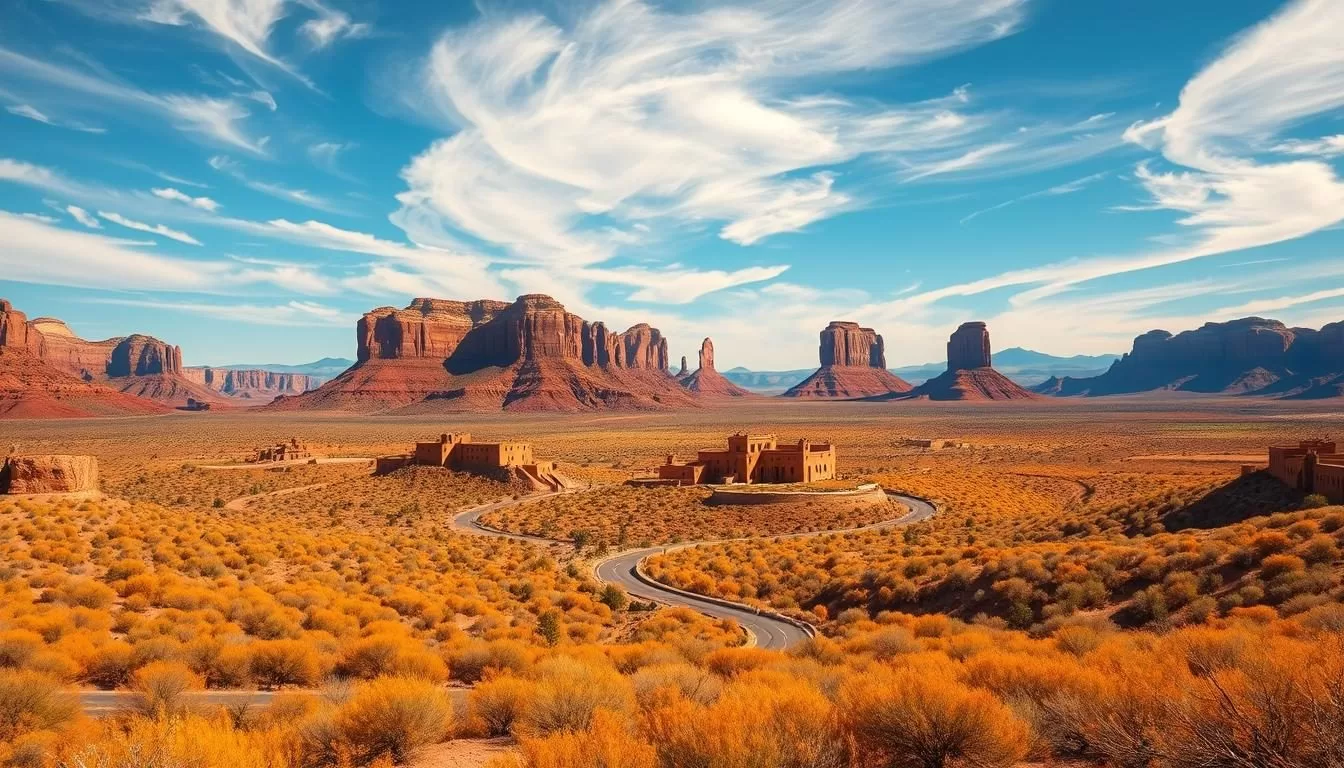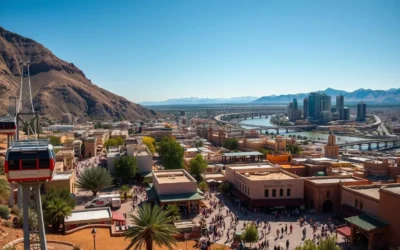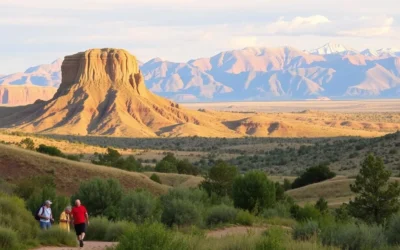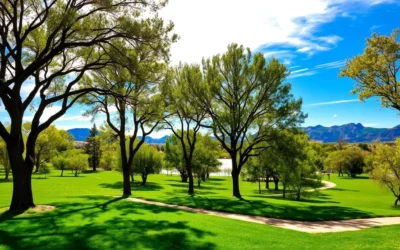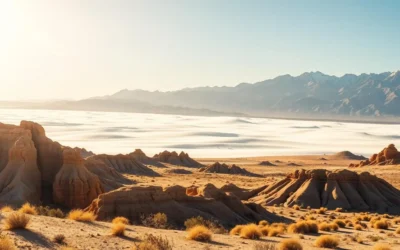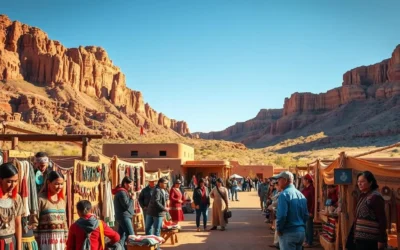✓ Accommodations ✓ Flights ✓ Rental Cars ✓ Tours & Activities
When planning your trip to the Land of Enchantment, understanding the state’s varied climate patterns is essential for maximizing your experience and avoiding weather-related disappointments.
New Mexico’s diverse geography plays a significant role in its climate, with four-fifths of the state sitting above 4,000 feet, creating dramatic temperature variations between regions. You’ll discover that the state offers incredibly diverse experiences throughout the year, with each season bringing its own unique charm and activities for travelers.
As you plan your trip, you’ll want to consider the optimal months to visit based on your preferred activities, whether you’re interested in cultural festivals, outdoor adventures, or avoiding crowds. By understanding the state’s climate and geography, you can make the most of your trip and enjoy all that New Mexico has to offer.
Understanding New Mexico’s Diverse Climate
The state’s varied elevation and geography contribute to its complex climate. When traveling across New Mexico, you will experience a wide range of weather conditions and temperatures.
Northern vs. Southern New Mexico Weather Patterns
Northern and southern New Mexico have distinct weather patterns. The north experiences colder winters with heavy snowfall, while the southern regions remain relatively mild year-round.
- The northern regions around Taos and Santa Fe have dramatic temperature swings, with warm summer days and cool nights due to high elevation.
- The southern areas, such as Las Cruces and Alamogordo, have a desert-like climate with milder winters and scorching summer temperatures.
Elevation’s Impact on Temperature and Conditions
Elevation significantly impacts your experience in New Mexico. Temperatures drop approximately 3.5°F for every 1,000 feet of elevation gain, creating diverse microclimates.
| Region | Elevation Impact | Weather Conditions |
|---|---|---|
| Northern New Mexico | High elevation | Cold winters, significant snowfall |
| Southern New Mexico | Lower elevation | Milder winters, hot summers |
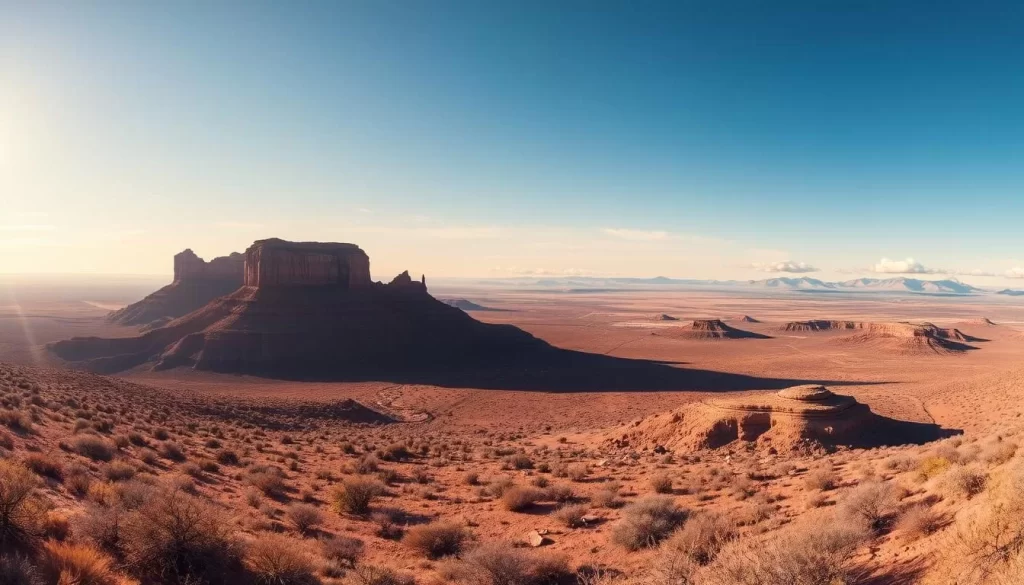
To be prepared, you should pack versatile clothing layers for potential temperature variations of 30-40 degrees in a single day when moving between high and low elevations.
Fall: The Prime Season for Visiting New Mexico
Fall is considered the prime season for visiting New Mexico, offering a perfect blend of comfortable temperatures and cultural experiences. The state’s diverse landscape transforms during this season, with the aspen trees in the northern mountains turning brilliant gold.
September to November Weather Overview
The weather in New Mexico from September to November is characterized by mild temperatures, ranging from the 50s to the 70s Fahrenheit. This comfortable climate makes it an ideal time to explore both outdoor attractions and urban centers without the extreme temperatures of summer or winter.
Albuquerque International Balloon Fiesta
The Albuquerque International Balloon Fiesta, held in early October, is a major highlight of the fall season. This world-renowned event features hundreds of colorful hot air balloons filling the sky, creating a spectacular visual feast that attracts visitors from around the globe.

Fall Festivals and Cultural Celebrations
Beyond the Balloon Fiesta, New Mexico’s fall season is filled with numerous cultural celebrations. You can experience the state’s rich multicultural heritage through events like the Santa Fe Wine & Chile Fiesta, the Taos Fall Arts Festival, and various Día de los Muertos events. The chile harvest season is also a significant part of the fall experience, with the aroma of roasting green chiles filling the air at farmers’ markets and roadside stands throughout the state.
Fall in New Mexico offers a unique blend of natural beauty and cultural richness, making it the best time to visit. With comfortable temperatures and a wide range of festivals and events, you can enjoy the state’s diverse attractions without the crowds associated with the peak summer season.
Winter Adventures in the Land of Enchantment
Winter in New Mexico brings with it a serene beauty, as the state’s diverse landscapes become a haven for skiing, hiking, and cultural exploration. You can enjoy a wide range of activities, from world-class skiing in the northern mountains to comfortable desert hiking in the southern regions.
December to February Temperature Ranges
During the winter months, New Mexico experiences significant temperature variations. Northern areas like Taos can drop to lows around 10°F, while southern regions like Las Cruces might enjoy daytime highs in the 60s.
Skiing Opportunities in Taos and Santa Fe
New Mexico is a fantastic destination for a ski vacation, with several top-notch ski resorts. The Taos Ski Valley is renowned for its challenging terrain and abundant powder, receiving up to 300 inches of snow annually.
Ski Santa Fe and Sandia Peak Ski Area near Albuquerque offer excellent skiing opportunities for beginners and intermediate skiers.
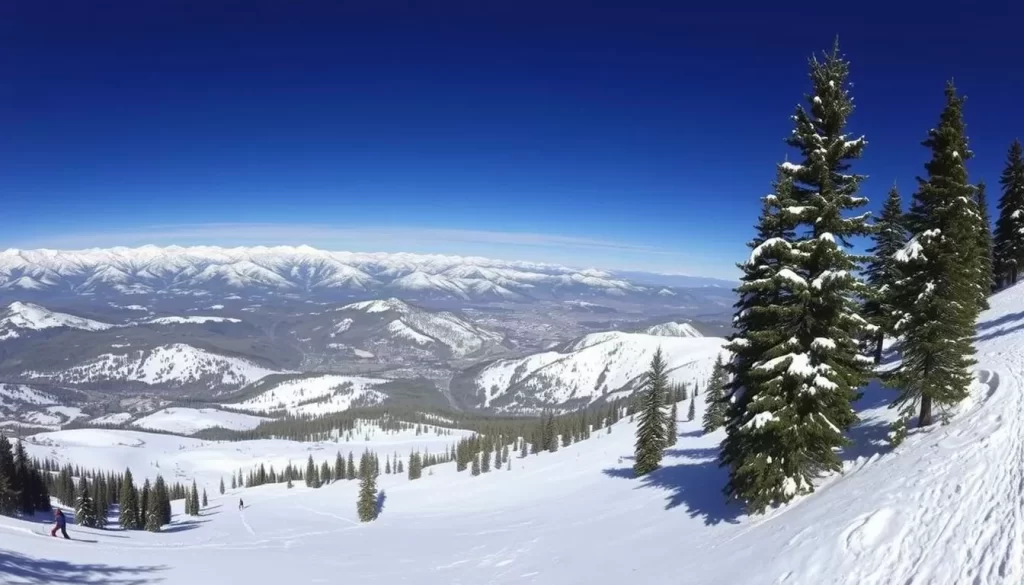
Winter Desert Hiking and Indoor Attractions
The cooler winter weather makes it an ideal time for hiking in New Mexico’s lower elevations. You can explore the stunning gypsum dunes at White Sands National Park without the scorching heat.
Beyond outdoor adventures, warm up by exploring New Mexico’s rich cultural offerings, including world-class museums in Santa Fe and the underground wonders of Carlsbad Caverns.
Spring Renewal: March to May in New Mexico
With the arrival of spring, New Mexico awakens from its winter slumber, revealing a landscape teeming with natural beauty. The transition from winter to spring is marked by changeable weather, particularly in March, where average lows can still dip to 27F (-3C), and flurries of wintery weather are not uncommon, especially in the northern parts of the state.
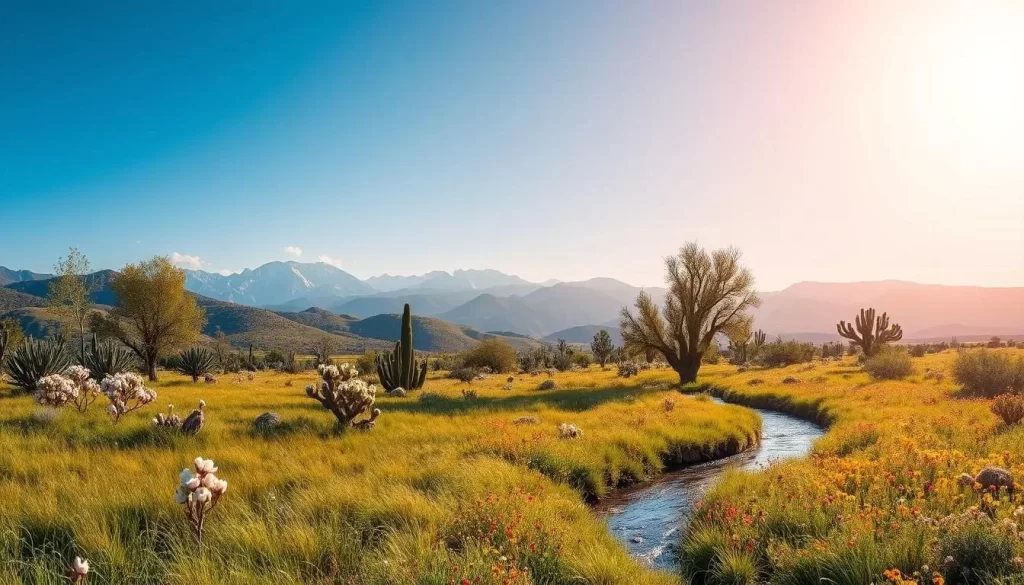
Moderate Temperatures and Wildflower Blooms
As spring progresses, temperatures in New Mexico begin to rise, bringing with them a spectacular display of wildflowers. By April, the snow starts to melt away, causing rivers to swell and wildflowers to bloom across the plains and mountains. The number of sunny days increases, taking average low temperatures above freezing for the first time in the year in the north, while the south experiences even warmer conditions.
The wildflower season is a highlight of New Mexico’s spring, with areas like the Gila National Forest and Valles Caldera showcasing vibrant natural displays of blue lupines, golden poppies, and purple verbena. This transformation makes spring an ideal time to visit New Mexico, with moderate temperatures and fewer crowds than the peak summer months.
Spring Cultural Events and Outdoor Activities
Spring in New Mexico is not just about the weather; it’s also a season filled with cultural events and outdoor activities. The Gathering of Nations Pow Wow in Albuquerque, typically held in April, is one of North America’s largest Native American cultural gatherings, featuring traditional dance, music, and art. Additionally, the improving weather conditions make spring an excellent season for hiking and exploring New Mexico’s diverse landscapes.
Whether you’re interested in experiencing the natural beauty of New Mexico through its wildflowers and hiking trails or immersing yourself in the rich cultural heritage through events like the Gathering of Nations Pow Wow, spring offers a unique and enriching experience. With its moderate temperatures and vibrant cultural scene, New Mexico in the spring is a destination that has something for everyone.
Summer Heat: Managing June to August Visits
Summer in New Mexico is a season of extremes, from scorching desert temperatures to cool mountain retreats. As you plan your visit during these months, it’s essential to be prepared for the state’s diverse climate conditions.
Dealing with Desert Temperatures
During the summer, New Mexico’s desert areas can become extremely hot, with temperatures often exceeding 100°F. To avoid the intense midday heat, schedule your activities for early morning or evening hours. Staying hydrated is crucial; always carry plenty of water and be aware of the signs of heat-related illness.
High-Altitude Escapes and Evening Activities
The high-altitude regions of northern New Mexico offer a welcome respite from the summer heat. Mountain towns like Taos and Red River are typically 15-20 degrees cooler than lower elevations, making them perfect summer retreats. As the sun sets, evening activities become especially appealing, with outdoor concerts, night markets, and stargazing opportunities taking advantage of New Mexico’s clear night skies.
Summer Festivals and Events
Despite the heat, summer in New Mexico brings vibrant cultural festivals worth experiencing. You can enjoy the Santa Fe Opera season, the Taos Pueblo Pow Wow, and the Santa Fe Indian Market, which showcases exceptional Native American art. These events offer a unique glimpse into the state’s rich cultural heritage.
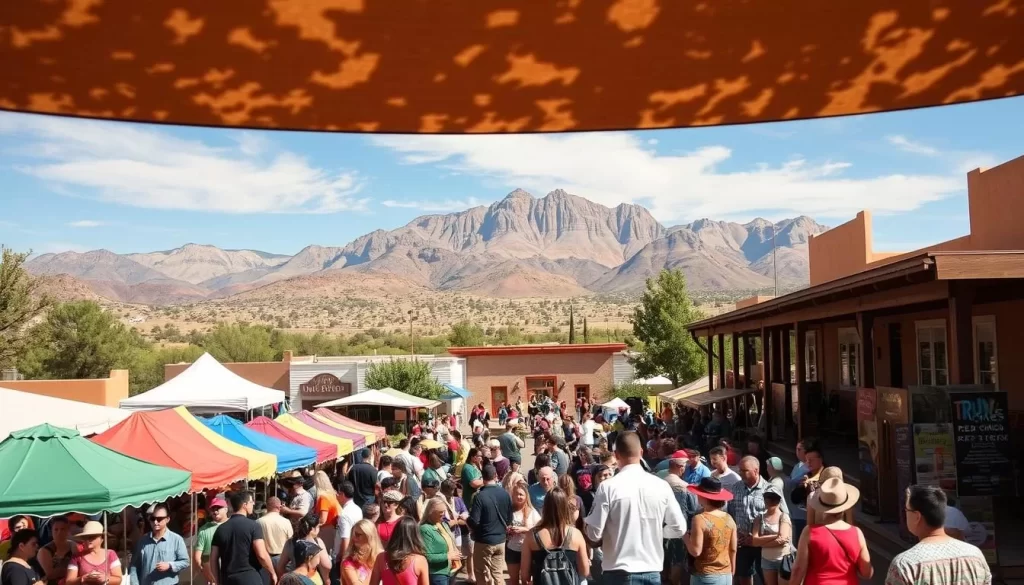
- Plan strategically for your summer visit to New Mexico, considering the high temperatures and potential rain showers during the monsoon season.
- Take advantage of the cooler high-altitude regions for a refreshing escape from the desert heat.
- Enjoy the vibrant cultural festivals and evening activities that New Mexico has to offer during the summer.
New Mexico, United States: Best Months for a Weather-Savvy Trip
New Mexico’s diverse climate means that the ideal time for a visit depends on your preferences and activities. The state’s varied weather conditions can be quite extreme, ranging from scorching summer highs to freezing winter lows.
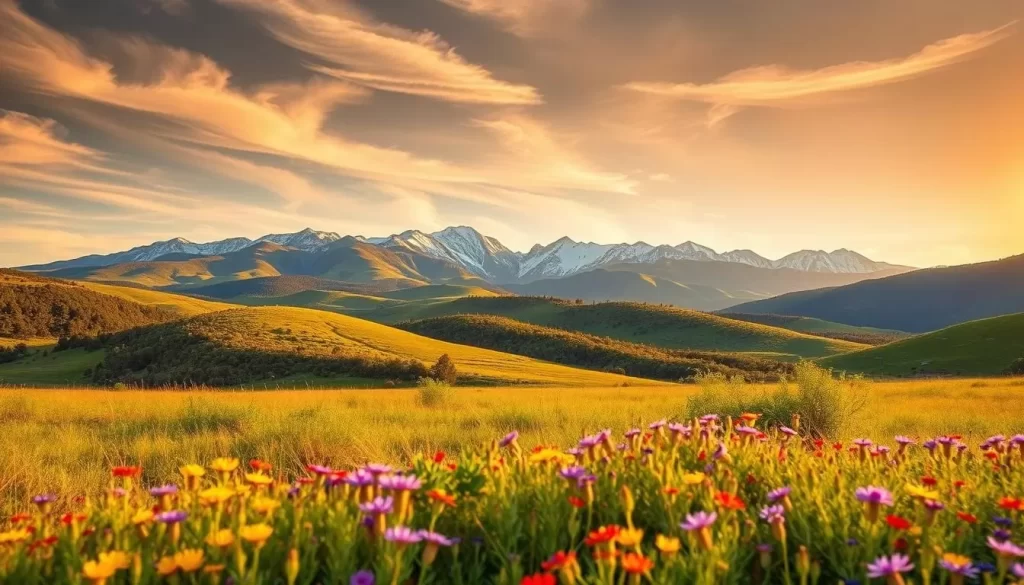
Optimal Months for Different Activities
For a weather-savvy trip, it’s crucial to choose the right months based on your planned activities. For general exploration, September-October and April-May offer the most balanced conditions. If you’re into outdoor adventures like hiking and photography, target mid-September through October for moderate temperatures and minimal precipitation.
For winter sports enthusiasts, January and February are the optimal months due to the deep snowpack in northern mountain resorts. If you’re interested in cultural experiences and festivals, plan around specific events like the Albuquerque International Balloon Fiesta in October or the Santa Fe Indian Market in late July/early August.
Planning Around Regional Climate Variations
When planning your trip, consider the regional climate variations across New Mexico. The northern parts can be 15-20 degrees cooler than the southern regions. To avoid crowds, consider the “shoulder seasons” of late April/early May or late September/early October.
Budget-conscious travelers can find the best value during March and November, when accommodation rates drop. Additionally, if you’re sensitive to altitude, allow extra time to acclimate when visiting high-elevation areas like Santa Fe (7,000 feet) and Taos (7,500 feet).
Exploring New Mexico’s Natural Wonders Year-Round
The Land of Enchantment offers a diverse array of natural attractions that can be enjoyed throughout the year. From the stunning white gypsum dunes of White Sands National Park to the ancient cave dwellings and breathtaking landscapes, New Mexico is a treasure trove for outdoor enthusiasts and nature lovers alike.
White Sands National Park: Best Visiting Times
When planning your visit to White Sands National Park, it’s best to avoid the summer months when temperatures can soar above 100°F, making hiking uncomfortable. Instead, opt for winter or spring mornings for a more comfortable exploration with fewer crowds.
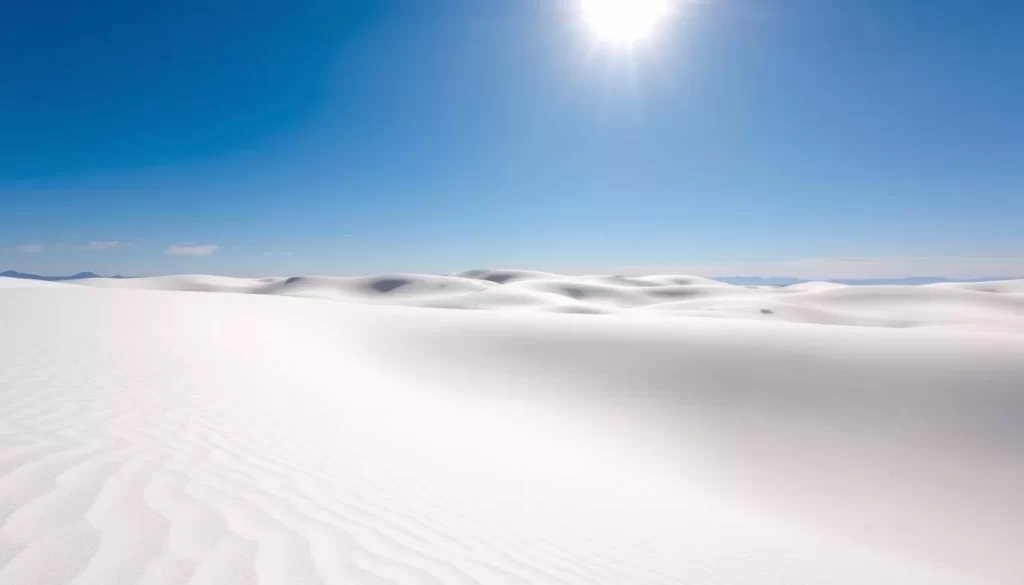
Carlsbad Caverns: A Year-Round Destination
Carlsbad Caverns National Park offers a consistent 56°F environment year-round, making it an ideal destination regardless of the season. Summer visitors can witness the spectacular bat flights at dusk, adding an extra layer of excitement to their visit.
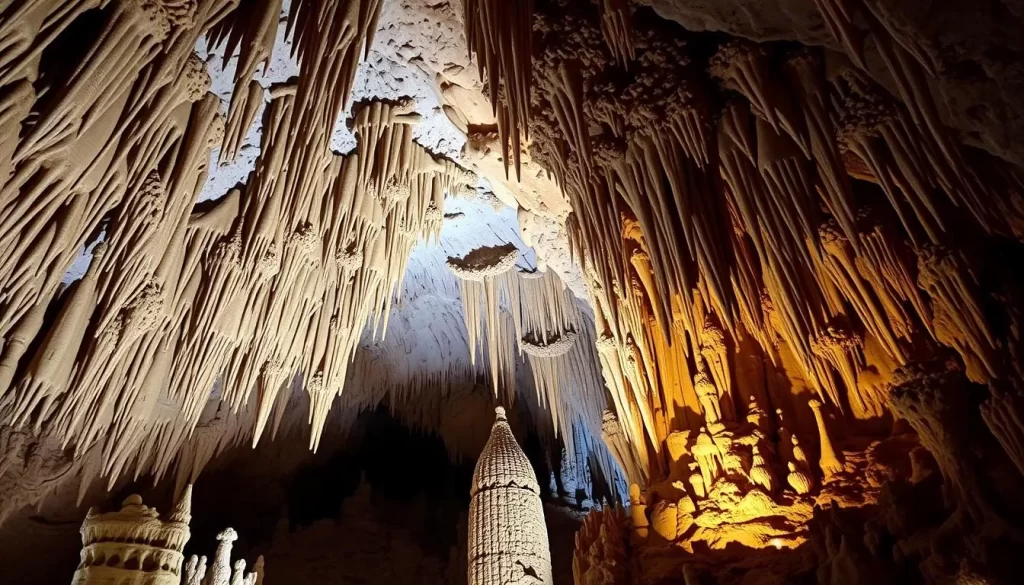
Petroglyph National Monument and Ancient Sites
For an optimal experience at Petroglyph National Monument, visit during spring or fall when moderate temperatures make hiking through the volcanic landscape more enjoyable. These periods also offer the best conditions for exploring other ancient sites like Bandelier National Monument.
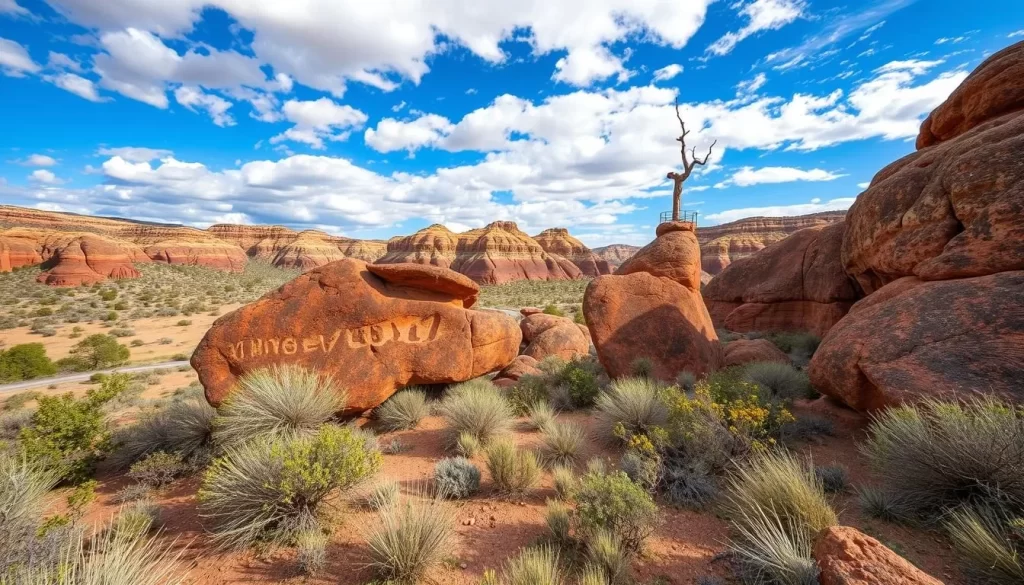
Whether you’re exploring the Rio Grande Gorge, visiting Valles Caldera National Preserve, or discovering the many other natural wonders New Mexico has to offer, timing your visit according to your interests can significantly enhance your experience. Visit New Mexico and immerse yourself in the natural beauty that this enchanting state has to offer throughout the year.
Cultural Experiences and Native American Pueblos
Immerse yourself in the vibrant cultural landscape of New Mexico, where Native American pueblos await exploration. The state’s rich Indigenous history is palpable in its many pueblos, each offering a unique glimpse into the lives of Native American communities.
Best Times to Visit Taos and Acoma Pueblos
When planning to visit Taos Pueblo, one of the oldest continuously inhabited communities in North America, consider the shoulder seasons (April-May or September-October) when ceremonial dances may be held while tourist crowds are thinner. The magnificent Acoma Pueblo (Sky City) offers guided tours year-round, but visiting during festival days like San Esteban Feast Day (September 2) provides a rare opportunity to witness traditional dances and ceremonies.
Seasonal Cultural Festivals and Gatherings
New Mexico’s cultural calendar is filled with festivals and gatherings that celebrate its Native American heritage. The Gathering of Nations Powwow in Albuquerque (late April) is a highlight, featuring over 500 tribes in a vibrant display of regalia, dancing, and music. For those interested in Native American art and crafts, the Santa Fe Indian Market in August is a must-visit, with over 1,000 indigenous artists showcasing their work.
To make the most of your cultural exploration, respect photography restrictions, dress modestly, and follow all posted guidelines when visiting pueblos, as you’re entering living communities where ceremonies hold deep spiritual significance.
Conclusion
New Mexico’s diverse climate means that the best time to visit depends on your preferences and interests. Whether you’re an outdoor enthusiast, culture lover, or festivalgoer, the state offers something unique every season.
When planning your weather-savvy trip to New Mexico, consider that fall generally provides the most balanced conditions, with comfortable temperatures and vibrant festivals. However, each season has its advantages, from affordable skiing opportunities in winter to blooming flowers in spring.
By understanding New Mexico’s seasonal patterns and regional climate variations, you can customize your trip to any month of the year. Whether you’re drawn to the cultural richness of Santa Fe or the natural beauty of White Sands, New Mexico promises a wonderful experience throughout the year.
The above is subject to change.
Check back often to TRAVEL.COM for the latest travel tips and deals.
